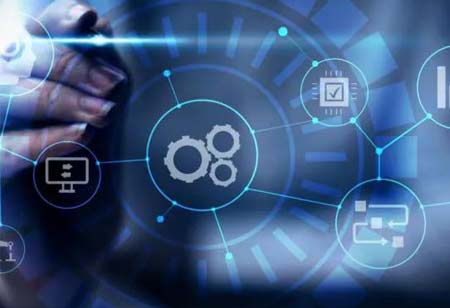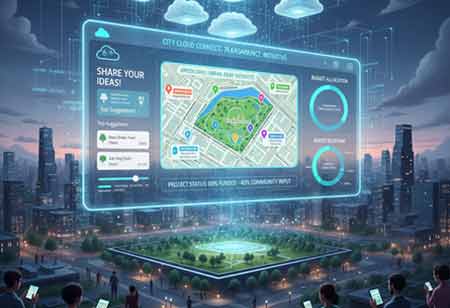THANK YOU FOR SUBSCRIBING
Be first to read the latest tech news, Industry Leader's Insights, and CIO interviews of medium and large enterprises exclusively from Gov CIO Outlook
THANK YOU FOR SUBSCRIBING

By
Government CIO Outlook | Thursday, October 24, 2024
Stay ahead of the industry with exclusive feature stories on the top companies, expert insights and the latest news delivered straight to your inbox. Subscribe today.
Government Integration Solutions (GIS) refer to systems and technologies that enable seamless communication, data sharing, and operational synchronization across various governmental agencies and departments. As governments around the world adopt digital transformation, the need for integrated systems has become crucial for efficient governance. These solutions not only enhance the transparency and effectiveness of government operations but also provide a unified interface for citizens to access public services, reducing bureaucracy and improving public trust.
Historically, government agencies have operated in silos, each with its own systems, databases, and processes. This isolation led to inefficiencies, duplication of work, and challenges in collaboration between departments. However, the increasing complexity of public administration, the demand for more citizen-centric services, and the pressure to reduce operational costs have driven governments to seek integration solutions. Government Integration Solutions are not just technological platforms but a combination of policy frameworks, IT infrastructure, and process re-engineering efforts aimed at ensuring that government departments can share data securely, collaborate efficiently, and operate cohesively.
A successful integration solution typically involves connecting legacy systems, automating workflows, and enabling data exchange across platforms. Integration allows departments such as tax authorities, health services, social security, and law enforcement to share information in real time, ensuring swift and informed decision-making. For instance, in welfare programs, integration allows social service departments to access real-time income and employment data from the tax authority, ensuring that welfare benefits are allocated efficiently and only to those eligible. This eliminates fraud, enhances compliance, and reduces the administrative burden on the government.
Several technologies underpin the successful implementation of Government Integration Solutions. One of the primary enablers is cloud computing. By shifting data storage and application hosting to the cloud, governments can break down data silos, enabling different departments to access information from a central repository. Cloud-based solutions offer scalability, flexibility, and cost-efficiency, allowing governments to scale operations without heavy upfront investments in infrastructure. Moreover, cloud platforms often come with advanced security features, ensuring that sensitive government data is protected against breaches or unauthorized access.
Another key technology is Application Programming Interfaces (APIs). APIs act as bridges between different systems, enabling them to communicate and share data. In a government integration context, APIs allow various agencies to pull or push data to centralized systems or between each other’s databases, without needing to completely overhaul their individual systems. For example, a health department can use APIs to access real-time patient data from national health databases without needing to transfer all that data to their servers.
Artificial Intelligence (AI) and machine learning (ML) are also transforming GIS by providing predictive analytics, automation, and enhanced decision-making capabilities. Through AI, governments can predict trends such as tax evasion, crime hotspots, or public health outbreaks, allowing agencies to respond proactively rather than reactively. ML algorithms can analyze vast amounts of data from different government departments to identify patterns and correlations that may not be visible through traditional analysis methods.
This fosters smarter, more targeted policymaking and service delivery.
Additionally, blockchain technology is emerging as a powerful tool for government integration. Blockchain offers a decentralized, secure, and transparent system for data sharing. Governments can use blockchain to manage records like land registries, identity verifications, or voting systems. The immutability and transparency of blockchain records ensure that all transactions or changes are securely logged and auditable, enhancing both security and trust.
One of the primary concerns in integrating government systems is data security. Governments handle a vast amount of sensitive information, including citizens’ personal data, health records, and national security details. The integration of systems inherently increases the number of access points, making them more vulnerable to cyberattacks. Thus, robust security measures are essential to the success of any Government Integration Solution.
Multi-factor authentication (MFA), encryption, and secure API management are critical elements in ensuring the safety of these integrated systems. Additionally, governments must adopt strict data governance policies, ensuring that data is accessed and shared in compliance with privacy regulations, such as the General Data Protection Regulation (GDPR) in the European Union or the California Consumer Privacy Act (CCPA) in the United States. Regular audits and vulnerability assessments are essential to identify and address potential weaknesses in the system.
While technology plays a crucial role in enabling government integration, the success of GIS is also heavily dependent on policy frameworks and governance structures. Governments need to establish clear policies regarding data sharing, data ownership, and accountability. For example, who owns the data once it is shared across different departments? How is the data to be used, and who is responsible for any errors or misuse? These questions must be addressed through comprehensive policies that ensure transparency and accountability.
The future of Government Integration Solutions looks promising as technology continues to evolve. With the increasing adoption of AI, cloud computing, and blockchain, governments are likely to become even more efficient, transparent, and responsive. Furthermore, the rise of smart cities—urban areas that use digital technology to improve infrastructure and services—will drive demand for integrated systems that connect everything from traffic management to emergency services.
Government Integration Solutions are critical for the modernization of public administration. While challenges remain in terms of legacy systems, security, and funding, the potential benefits of more efficient, transparent, and citizen-centric government operations make integration a vital goal for governments worldwide.
I agree We use cookies on this website to enhance your user experience. By clicking any link on this page you are giving your consent for us to set cookies. More info

However, if you would like to share the information in this article, you may use the link below:
www.govciooutlookeurope.com/news/the-rise-of-government-integration-solutions-nid-2300.html



